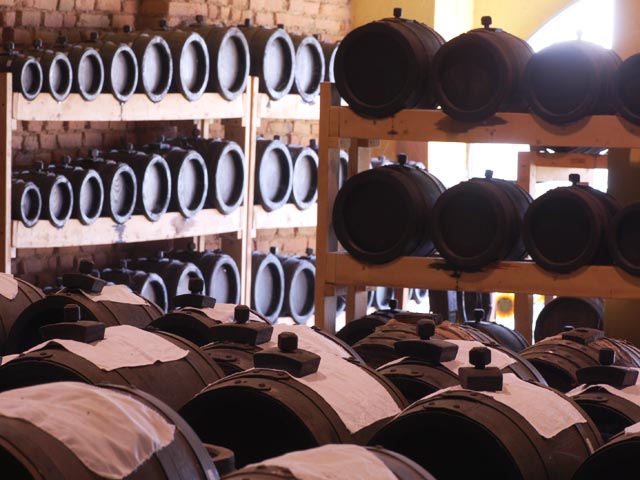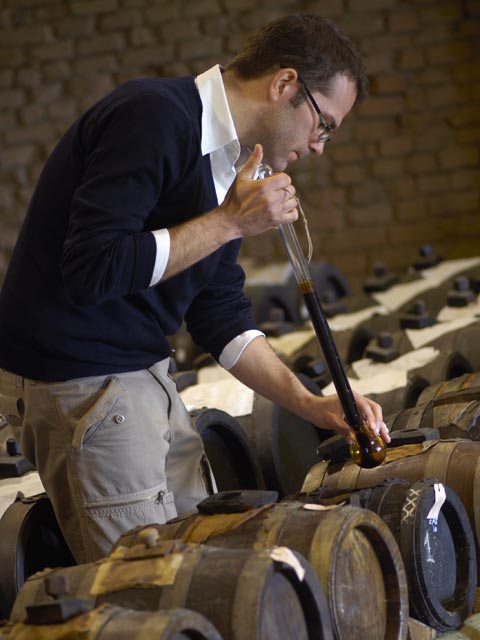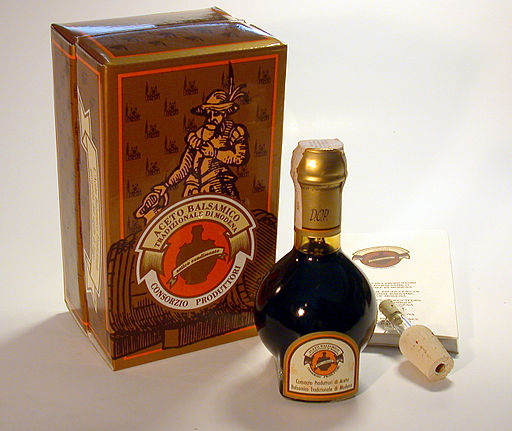
There are many forms of balsamic vinegar on supermarket shelves these days. The most industrial forms can be made anywhere with a variety of ingredients that may or may not contain concentrated grape must, wine vinegar, sugar and caramel coloring. For this reason, it is often difficult to grasp the differences between a $10 bottle of balsamic vinegar and a $40 bottle of balsamic or even a $150 bottle.
The easiest way to understand the nuances of different balsamic vinegars is by taking a look at Balsamico Tradizionale from two small provinces in Italy: Modena and Reggio-Emilia. This, the highest quality balsamic, representing the purest form of the condiment, is produced only in these two provinces. Each province has a certification body, which certifies and grades the traditional balsamics into different levels of quality.
The certified levels of balsamic vinegar are extra-vecchio and affinato. In Modena, where they produce Balsamico Tradizionale di Modena DOP, the extra-vecchio has a gold cap and the affinato has a silver cap. In Reggio-Emilia, where they produce Balsamico Tradizionale di Reggio-Emilia DOP, the extra-vecchio has a gold label and the affinato has a red label. Reggio-Emilia also has a silver label which, although still technically considered affinato, has been awarded a higher quality score from the grading consortium.

Andrea Bezzechi of Acetaia San Giacomo produces Aceto Balsamico Tradizionale di Reggio Emilia.
One of the first questions we get about any of our balsamics is ';how old is it?' On the surface, this is a simple question that any good retailer should be able to answer. However, the true answer is a bit complicated and is best understood in the context of how Aceto Balsamico Tradizionale is made.
The must (freshly pressed grapes including skins, seeds and stems) of regional grape varietals (commonly Lambrusco or Trebbiano) is cooked over a direct fire in open containers to the desired volume and sugar concentration (usually about 60% of the original volume and between 28% and 36% sugar concentration).
- The concentrated grape must then goes through a process of fermentation where the must acetifies. After fermentation, the must is placed in a large barrel made of wood (oak, mulberry, juniper, cherry, chestnut etc...) and the oxidation and maturation process begins.
- After a period of time in the large barrel, the acetified must is moved into a batteria of smaller and smaller barrels over a period of at least 12 years. Once or twice a year, a quantity of balsamico is taken from the final aging barrel to fill an allowed quantity of bottles for sale. That final barrel is then topped up with balsamico from the second to last barrel, which is topped up from the third to last barrel etc... until you get to the first large barrel which is filled again with the latest batch of fresh, cooked must.

Production process used at Acetaia San Giacomo
So how old is the silver-capped Balsamico Tradizionale di Modena or the red-labeled Balsamico Tradizionale di Reggio-Emilia? The answer, according to the certification requirements, is at least 12 years, but if the batteria has been operating for over 100 years, a fraction of that final barrel will contain balsamico that is much older. For the extra-vecchio, the balsamico in the bottle must be at least 25 years of age, but again, likely has some fraction of older balsamico.

Gold Label Balsamico Tradizionale from Acetaia San Giacomo Reggio-Emilia
Historically, it has been a bit of a marketing ploy to claim that a certain balsamic is 20, 30, 50 or even 100 years old – but in all likelihood, this claim was more marketing than truth. Perhaps a fraction of the contents is over 100 years old, but doubtful all of it – and there is no certification of such a claim. In fact, there is a prohibition in Italy against any age references on labels that bear the name ';Balsamico.' If you see a number on a label of balsamic, it will likely mean that it is not from Italy (and therefore not subject to their rules) or it is a number that does not refer to age-in either case, be wary.

Aceto Balsamico Tradizionale di Modena whether from Reggio-Emilia or Modena, Aceto Balsamico Tradizionale may use only approved bottle designs. Reggio-Emilia uses the 'inverted tulip' shape shown here from Acetaia san Giacomo. Modena uses a bottle with a short narrow neck atop a bulbous bottom designed by famed Italian designer Giorgetto Giugiaro.
What about the rest of the balsamic world? My next post will be on the recent creation of the I.G.P. Aceto Balsamico di Modena... Stay tuned.
Tim Bucciarelli oversees general operations at Formaggio Kitchen Cambridge and manages Formaggio Kitchen Online.

